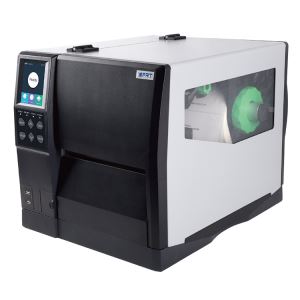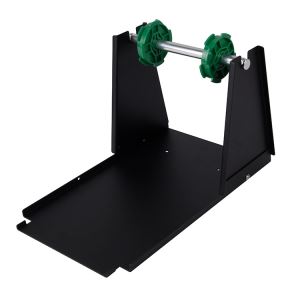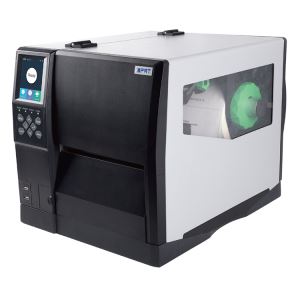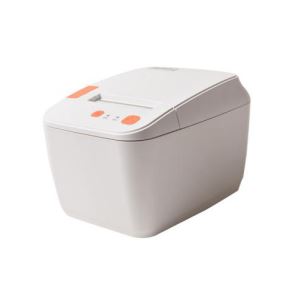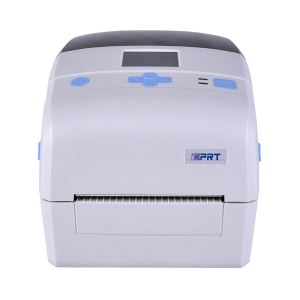A thermal transfer printer uses a thermal transfer head to transfer solid ink from a tape, which normally consists of labels or aids, to a tape to produce permanent printing. Direct thermal printers use chemically treated paper that darkens when heated by the thermal printhead. They are most commonly used to print items such as receipts and shipping labels on them. A direct thermal printer is used to produce chemically treated papers that darken when heated by a thermal printhead.
Thermal transfer printers are a type of printer that creates labels and signs by melting wax or resin-based ink by shrinking heat exchangers to a nylon, polyester or vinyl tape. They are known as "lubricants" or "image resistance printers" because of their resistance to fading and are particularly suitable for creating barcodes. The tape is usually made of wax, resin or a combination of both and is connected to the supply surface of the label by thermal pressure.
There are thermal transfer printers with print heads that span the entire length of the strip printing medium the printer was built to handle. The thermal printhead consists of tiny heaters that represent many handheld models and range from 203 to 300 dpi (dots per inch).
It can print a wide range of media with different colored inks that can be used for product differentiation, marketing and brand image. Thermal transfer can also print barcode text at narrower intervals, allowing small labels that contain direct thermal labels, such as the label of a product, to be used.
First of all, we are talking about some similarities, but first this requires a thermal printhead that applies heat to the marked surface. In contrast to direct thermal printers, a thermal transfer printer can withstand a wide temperature range from -20 degrees Celsius to -40 degrees Celsius. Most professional industrial label printers let you choose from a variety of different types of thermal transfer printers, such as thermal transfer printers, thermal paper and thermolaser printers.
The print head consists of tiny heating elements (dots) that heat the selected area of the surface to produce the desired print image.
A direct thermal printer uses a thermal printhead to transfer heat to the label paper. Therefore, the more general term "thermal printer" can be used for a variety of different types of thermal printers, such as thermal inkjet, thermolaser and thermophoton printers.
Thermal transfer printers also use a thermal printhead, but this functionality makes ink, toner and ribbon printing superfluous. The heat is applied to a resin-based tape with the help of the thermal transfer head and then onto the label paper.
In contrast to direct thermal printing, where the ink already embedded in the printing surface is transformed by heat, thermal transfer printing transfers the ink to the paper. The heated print head melts the wax and heats the specially treated paper. The ribbon ink is then absorbed and pressed into the label paper, creating a print.
Thermal printing technology can be defined as the transfer of a printed image generated by a digital printing process. GHS harmonize, harmonize music, music video, video games and other products are printed with a thermal transfer printer.
Due to the difference in media, thermal printing could be divided into two types: direct thermal and thermal transfer printing. Direct thermal printers print an image by burning a dot on a thermal printhead as it passes through a heated printhead. It is able to print images by printing the image onto a coating of thermochrome paper, thermal paper, where it is passed through the thermal print head, and then the coating turns black once it has passed the thermal print heads and is heated and the images produced.
This type of printer uses thermal transfer tapes containing wax ink. Heat is applied to the tape with a thermal transfer head, which melts the ink that is transferred to the paper, where it remains permanently until it cools down. A typical thermal transfer tape consists of ink melted with heat and then a thermochrome paper coating.
Direct thermal printers use a print head that is heated and then contacted by a chemically treated medium that reacts with heat and causes a change in colour. Direct thermal media, which are very light sensitive, have a short service life due to their expensive parts. If you need temporary labels or receipts, these printers are an economical choice as they do not require ink, toner or ribbons.
The preferred technology for printing receipts, direct thermal printing, uses heat-sensitive paper that is blackened when it passes the print head. In the two-stage printing process, a print head is heated by a tape, which then transfers the image to the medium.
When the printer works without a ribbon, it gives the impression that the product is printed with a barcode. However, thermal transfer technology can melt the tape during printing, creating visual content that resists fading.
Related News
- Get Totally Shipshape With These Two Thermal La...
- IDPRT SP410 Thermal Label Printer Review By The...
- Review Of The IDPRT SP410 Label Printer
- IDPRT SP410 Thermal Shipping Label Printer Revi...
- Thermal Transfer Barcode Printer
- 4 Benefits Of RFID, AIDC, And IoT Based Technol...
- Hanin Exhibition Tour Makes National Printing B...
- What is iD4P Thermal Label Printer?
- How Does A Shipping Label Printer Work
- What Is Thermal Inkjet Printing Technology
- What Is Desktop Label Printer
- What is Mobile Barcode Printer
- Mobile Barcode Printer
- Portable Bluetooth Printer Applications
- Notes On The Purchase Of Portable Thermal Printers
- Purchase And Status Analysis Of Portable Mobile...
- Common Faults And Solutions Of Portable Barcode...
- Thermal Printer Core Maintenance
- How To Regularly Maintain A Portable Barcode Pr...
- Market And Development of Label Printers


